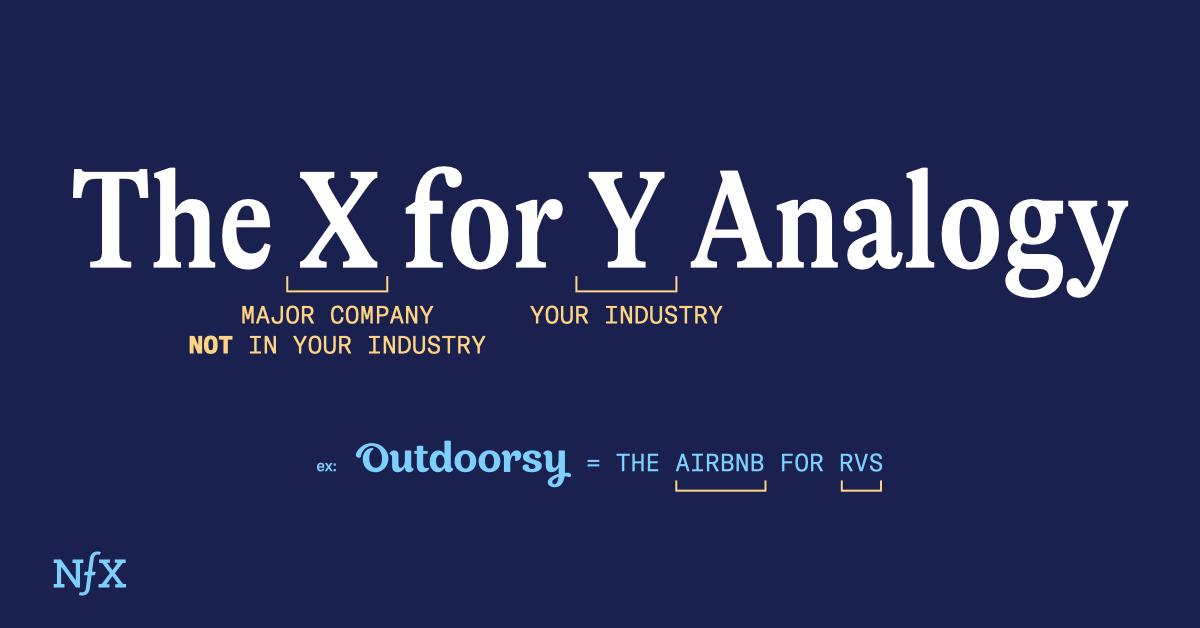

There’s a concept in network theory called preferential attachment. When one “node”– a person, a company – gets ahead, more people want to connect to it. So it gets even bigger and more connected. It becomes a lodestone, a magnet.
PR for your company can work the same way. Once you start getting attention, the more attention accrues to you. The more you get, the easier it is to bond talent, investors, customers, partners, and journalists to your company – your “network.” Which in turn brings even more attention.
If you haven’t experienced this yet, it sounds too good to be true. But if you have, you know there’s a learnable playbook behind it.


There’s a real set of answers to the question: How can my startup build this attention flywheel from the ground up?
For the benefit of all early-stage Founders in our network, I dug into this with my friend Vijay Chattha, founder of public relations firm VSC. Vijay has worked with many NFX unicorn companies including Mammoth Biosciences, Poshmark, and Outdoorsy, to build attention and momentum from their earliest days.
Here are key insights taken from our NFX podcast conversation, covering topics such as: finding your unique story, hacking preferential attachment, why funding announcements actually work, thinking beyond funding announcements, and more.
Let’s jump in.
This essay was constructed from the NFX Podcast Episode: Building Your Startup’s Attention Flywheel.
Finding Your Unique Story: The PPPC Framework
VSC doesn’t take on a lot of clients. Like NFX, they are highly selective and work with the top 1% of Founders and their companies. Here’s how VSC chooses who to take on, and what elements you need to have (or hack) to establish the ingredients for a strong story.
They use a framework to evaluate companies. It’s called PPP&C: People, Product, Pedigree, Capital.
1. People: Are we going to enjoy working with these people? Pretty straightforward.
2. Product: Does the product give me goosebumps? Would I tell someone else about this company anyway, even if I wasn’t getting paid to do it?
3. Pedigree: Journalists care about who they are reporting about. What’s something interesting about you that we can get attention around, based on an experience you’ve had. Pedigree examples:
- I built my first startup at the age of 12. Or, I built my last startup at the age of 89. Where are you from? Is it unique in some way?
- Company names and “big logos” help [a Founder worked at Google, Facebook etc].
- Universities don’t actually help much. They may help for building your own network, but they aren’t unique or impressive.
- The word “pedigree” is so loaded. You might not have gone to a great school. You might not have been born rich. But that can be turned into something that’s interesting.
- Pedigree may even be the wrong word. Maybe it’s better to say: Is your origin story strong?
4. Capital: Are you a venture-backed company? We only choose companies who we think have the resources to push this thing all the way through. We want to tell journalists about a company that will still be around next year. While we do focus early, we’re very picky about those types of companies. We have to think there’s going to be an ability to have an extended storytelling runway.
What are your goals?
The first thing we at VSC always ask our Founders is: What are your goals? I want to know your goals for the next 6 months and the next 12 months.
Usually they’ll tell me: we need to get out the door. We’re launching. Or they’ll say they want to get a couple stories a month. That’s not a goal, that is a tactic. What is the goal?
Then they get more clear. The goal is that we need to start getting customers. We need our first 10, 50, 200, 100 customers. Okay, good. That’s a goal.
Or they need to be in the market for raising money, they’re looking at their next round. Great, that’s a goal.
At seed stage, you only want one or two goals. Get really clear on what they are before you start trying to get attention, because it will determine who you want what kind of attention from.
Build Your Journalist-Story Fit
Pitching a journalist is like pitching an investor or making a sale. You have to research and know your audience, understand their career goals, and determine how you fit in with them.
Advice for finding journalist-story fit:
- It’s just like pitching an investor. You have to say: ‘I read your blog post on this thing. I know what you’re good at, what lights you up. I think I have a unique story for you.’
- When you talk to a journalist, think of it as a dialogue and not a monologue.
- Understand who you’re talking to. What is their style? What do they follow on social media? What are they into? Work your story around their interests and you’ll be a better storyteller.
- It’s not about you, it’s about them. It’s about making that person’s career better. How can I make this journalist more successful with the story they’re about to write?
- Visualize what headline would make everybody super interested. Think about what’s happening in the world instead of just happening with your business.
- If a story is bigger than one company, it’s probably a better story. More people will trust it, and see it as a shift in the world, not just marketing.
Tactics for developing your “Positioning”
Positioning has been a popular buzzword since Al Ries’s great book Positioning: The Battle For Your Mind, but it can have a huge impact on tangible metrics like your valuation, or what kind of funding you’re able to attract.
When we say positioning and strategy, we really just mean the words you use to describe yourself and the overarching plan.
Just pick 3 words
There’s a lot of hand-waving at business school about strategy and positioning. Most people overcomplicate this. Simplify.
Instead think of it as: What three words would you pick to describe yourself? Just pick the words.
But be specific. PR words are different from marketing words and different yet again from the words you use when talking to an investor or a potential hire. Customize your words to your audience. Founders focus too much on fundraising speak and put that out to journalists and customers. It falls flat. If you want to get that deal closed it’s about what they want (journalists and customers).
Also, realize that words actually translate to value. For example, if the company is an ‘X for therapy’ then it’s going to have that kind of valuation. But if it’s an ‘X for diagnostics’ then it has this other kind of valuation. Once you know which you want to be, then you know to focus on this one, not that one. The public market comps are very different – which example and valuation do you want to attach to?
The X for Y analogy


Not every Founder likes to be compared to another company. Often we want companies to be category-defining. But there are some situations where this shorthand can be a useful positioning tool.
One that VSC did recently was for Outdoorsy. (An NFX portfolio company). We said, here’s the “Airbnb for RVs.” Simple. Everybody gets it.
There are founders who would’ve fought back about that. YouTube is not the Google of video, and that’s fair. It works when you know that the analogy you’re making is between yourself, and a company that would never be in your business anyway.
Write your launch article months before you need it
One small thing that really works: Write your own launch that you want to appear in Forbes or Wall Street Journal or TechCrunch or wherever. Eight or nine months before you need it. It’s a really focusing exercise for how you’ll actually run your business.
It’s not doing PR. It’s laying out how third parties are going to see you in relation to your competitors, how much you raised, and what your mission and your positioning is. All that can come out in that launch article, and if you write it before you’re ready, it will actually drive the business in a much better way.
This is similar to what Jeff Bezos was doing at Amazon. When division leads would come to him with a new idea, he’d ask them to write the press article about the idea. During the writing process, they would sometimes realize the idea wasn’t that interesting. If it didn’t crystallize a good idea, it actually shut down a lot of bad ones.
By writing this way, you’re training yourself as a Founder to be driven and directed toward the goal, the mission, the outcome.
Do a storytelling audit
More positioning exercises for early-stage Founders:
- What is the news inside your company? What’s in your cupboard? Interesting things that people don’t know about you yet?
- What are three things about your technology that are really, actually differentiated? “Easier to use” or “better designed” don’t count.
- What is interesting about your team that will solve this problem?
- Why should anybody care about your company?
- Of all the things someone’s pitching that day, why do you matter?
- What are you working on that matters in the big picture?
- What is your perfect email subject line to a journalist? To a customer? To an investor?
- What are your perfect three words?
Hacking Preferential Attachment
There’s a concept in network theory called Preferential Attachment: any node that gets ahead gets further ahead because people preferentially attach to that node. “In most real networks new nodes prefer to link to the more connected nodes.”
It’s like a snowball effect.
The traditional media landscape is shifting. Instead of thinking about the media as a monolith, think about influence. Influence was static until the internet came along, but now the number of people with meaningful influence has gone way up. Think about who represents big nodes in your network.
Here are some ideas for getting your flywheel going:
- Ask yourself: Who are the people that influence your business?
- It could be an investor who does one tweet and only has 50 followers, but those 50 people matter.
- There are people on TikTok and LinkedIn who have followings. There are people on Twitter. There are analysts. Advisers. Professors. Authors. And yes, there are reporters.
- Create a personalized grouping of the people who influence your business and then figure out a way to get to know them, get on their good side, give them something interesting, and then have them talk about you.
- There’s actually 10x the people, when you think of it that way. It’s more than just the journalists.
- Maybe there are 7 journalists who matter for you, but there are 300 power nodes who can drive attention to you. You have a different math problem now for how you move to get the word out.
- Preferential Attachment can be hacked – associate yourself to the biggest nodes.
- If you are building a startup and the biggest elephant in the room is a company everybody hates, then you can go after all the beat writers that cover it.
- For example: VSC was working with an alternative to Uber. We found every beat writer that covered Uber. Then we found the ones that wrote negative things about Uber because we were the alternative. We went to those people. We got amazing stories because they were trashing Uber at every moment.
- Preferential Attachment is a huge part of punching up. Punching up means connecting yourself to something bigger than you that is already getting attention
- If it’s not you with preferred attachment, latch onto somebody else that does.
- For example: Airbnb for RVs, right? We are basically surfing their brand reputation, and 20-30 millions of dollars of their comms.
- I remember when a good friend of mine who was a journalist got hired by the LA Times. I said, well what’s your beat? And she said, Google. I have to write at least one article a week about Google and then I can do everything else I want.
- It just blew my mind that Google had so much preferential attachment. In order for the LA Times to have more people read their stuff, they needed to be talking about Google or Apple or Elon Musk. Then you can have other articles as well that sort of tag along.
- What drives viewership is these well-known nodes and you want to become one of those well-known nodes as fast as you can. Attention accrues to them.
Why Do Funding Announcements Matter, Anyway?
Most startups aim to get their first media coverage around their funding announcement. Why is that? It can feel kind of cookie cutter, and we want that to change, but it’s worth understanding why these funding announcements matter.
When money changes hands, people have to write about it. It’s like a transaction. So these announcements are almost like your entry in a public ledger, something that journalists can use to convince their editors that something really happened here, that something moved from point A to point B.
And for this purpose it’s (surprisingly) more important than revenue. If you go out and say “Hey, by the way, I wanna do a story about hitting $100M in revenue,” you will not get covered. But if you say “Hey I wanna do a story about raising $15M in funding,” you’ve got a story. It’s hilarious. It feels backwards.
But this is because the funding story is not just about customer money coming in, it’s that these venture capital organizations or corporations put significant money in. It’s a transaction matched with social status around validation.
Even a massive amount of revenue doesn’t confer as much validation in public as somebody who’s supposedly really smart investing their money into you. Also, revenue is hard to verify. If revenue is generated in an early stage, private company, no one’s opening up their books to the journalist to show them the money coming in. So it’s not a verifiable thing. People can just make stuff up and the journalists are like, look, I don’t believe your revenue run rate or your growth rate. Who cares if you grew 400% this year. It could have been from $2,000 last year.
So that’s the logic for why the funding announcement gets an undo amount of attention. It’s an instantly verifiable thing about your company at a transaction scale and status that gets attention.
Beyond Funding Announcements: The I-T-D Method
Many Founders find it hard to get coverage beyond basic funding announcements. VSC cracks this problem open with their I-T-D method: Innovation, Thought Leadership & Data.
Innovation: There’s a software versus hardware problem. It’s too easy to make a software product these days, and journalists are like: Why am I writing about these things? You probably just did this in a weekend.
To get ongoing coverage, there has to be a really dramatic step up or true innovation in what your software enables. Maybe in 1 of every 10 situations, you’ll see a story about a software company that’s doing something dramatically interesting. So dig deep for what your dramatic innovation is.
Thought Leadership: There are 4 things for early stage Founders to know about thought leadership
1. Do you have ideas that the consensus disagrees with? Do you have an insight that nobody’s talking about, that really matters? Great.
One way to do good thought leadership is think about things that truly people are curious about. And if it makes you feel a little bit uncomfortable to write it, then it’s a good idea. But if it feels like selling to somebody, you probably have to think twice.
2. The bar is going to be so much higher now for content and thought leadership because of ChatGPT. There’s going to be tons of mediocre shit out there.
It will be the truly creative, interesting stuff that breaks through. But that’s good. When you really want to create havoc and disruption, it’s going to have to come from the core of your heart, not from an AI or a third party consultant.
3. Another useful thing about thought leadership is that it’s objection handling. This is a big one. For example, a seed stage Founder comes to me after we do the funding announcement or something and says: Hey, we’re launched, thank you for getting attention, great. But when we’re talking to so-and-so big client, they still don’t believe X, Y, Z about us, or they still think one way and we think it’s another way. This is a great situation when objection handling has to be solved – thought leadership could be the way to do it.
You could write about the 3 reasons why something is actually this way and not that other way. You can visualize why something is changing and dismantle objections one by one. Then we’ll take those posts or essays and put them on LinkedIn, and run them as an ad just to those customers, so we can see if we can actually start shifting their perception in some way.
4. Generally I think Founders can become better than they were at thought leadership, even if they weren’t born with it. If they’re a zero, they can get to a five. If they’re a five, they can get to an eight. And then there are the natural, raw tens, but there aren’t many of those. The point is there are tools and techniques to get you lift, and developing your thought leadership is worth it.
Data: Companies are starting to collect a ton of data. I mean a massive amount. And journalists love data. We think this can be a big key to sustainable PR.
It might be harder at seed when you don’t have a ton of data yet, but you should think this way and as you grow your data, mine it for stories.
Could Outdoorsy tell us about RV trends in America? Does that tell us anything about new travel trends, or time-off trends, or remote-work trends?
Think about the data you can capture and ask questions of it. Can you become a data PR machine for a new industry?
When is it Worth Hiring a PR Firm?
There isn’t a hard rule about when and when not to hire a firm. But here are some rough guidelines:
- The first thing you have to ask is: what are my goals?
- If you want one story, then find a consultant or find a small agency or maybe even your fund has someone internal who could find a story to launch or to do a funding announcement.
- When you have bigger goals of finding customers and raising attention for the next round of funding, that calls for a consistent communication program. Sustainable PR, not just a one-time hit.
- You want to be in the market for months trying things and pushing stories to get attention and building relationships with the media.
- If you: 1. Have a real story to tell 2. You’ve raised $5M or more – that’s the time to hire a PR firm and get that story out there.
- Have a strategy and then commit for the long term to get to know the right people. Build your storytelling runway.
Listen to the rest of this conversation on the NFX Podcast.
As Founders ourselves, we respect your time. That’s why we built BriefLink, a new software tool that minimizes the upfront time of getting the VC meeting. Simply tell us about your company in 9 easy questions, and you’ll hear from us if it’s a fit.
